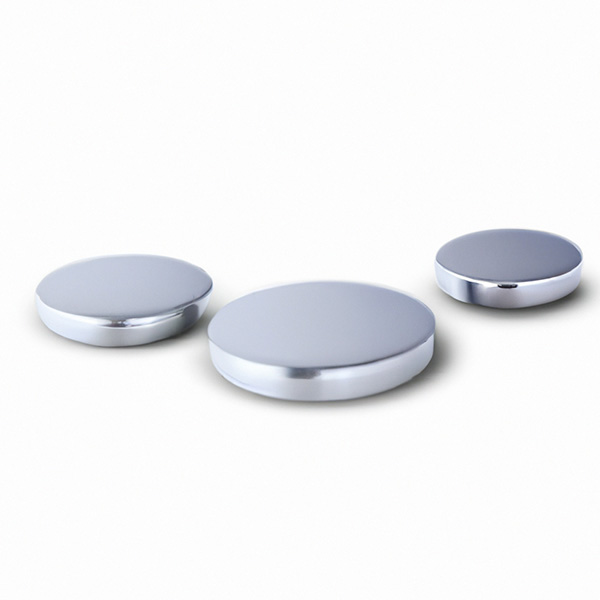
A button magnet is a type of magnet that is shaped like a small, flat button. Button magnets are typically made of materials such as neodymium, samarium-cobalt, or ferrite, and they can be found in a wide range of sizes and shapes.
They are often used in a variety of applications, including motors, generators, sensors, and speakers, because of their strong magnetic properties and ability to produce a concentrated magnetic field. Button magnets are also commonly used as fasteners, such as in the closure of bags or other containers, or as temporary holding devices for small objects. They are typically easy to install and are durable, making them suitable for use in a variety of applications and environments.
Some features and advantages of button magnets include:
Strong magnetic properties:
Button magnets are known for their strong magnetic fields, which make them suitable for use in a variety of applications that require a concentrated magnetic field.
Small size:
Button magnets are small in size, which makes them suitable for use in applications where space is limited.
Versatility:
Button magnets can be found in a wide range of sizes and shapes, which makes them suitable for use in a variety of applications.
Durability:
Button magnets are typically made of materials that are resistant to corrosion and wear, which makes them suitable for use in applications where they may be subjected to harsh conditions.
Cost-effective:
Button magnets are typically less expensive than other types of magnets, which makes them an attractive option for a variety of applications.
Easy to install:
Button magnets are easy to install and can be mounted using adhesive or mechanical fasteners.
Wide temperature range:
Button magnets are capable of operating over a wide temperature range, which makes them suitable for use in a variety of applications where temperature changes may occur.
We can custom manufacture Button magnets to your exact specifications.
There are several methods for producing button magnets, including powder metallurgy, isotropic pressing, injection molding, sintered process, and bonded process. The specific manufacturing process used to produce a button magnet will depend on the size and shape of the magnet, as well as the desired properties and performance requirements.
In general, the production process for button magnets involves the following steps:
1. Mixing:
A magnetic material is mixed with a binder to create a slurry or a molten mixture.
2. Pressing:
The slurry or molten mixture is pressed into a mold to form the desired shape.
3. Heating:
The mold is heated to cure the binder and harden the magnet.
4. Cooling:
The mold is cooled, and the button magnet is removed.
5. Finishing:
The button magnet may undergo additional finishing processes, such as polishing or coating, to improve its surface finish or protect it from corrosion.
There are many grades of neodymium button magnets available, and the appropriate grade will depend on the specific application. The most common grades for neodymium button magnets are:
N35: :
This is a medium-strength grade, with a maximum energy product (BHmax) of 35 MGOe (Mega Gauss Oersteds). N35 magnets are commonly used in consumer products and industrial applications.
N38:
This is a higher-strength grade, with a BHmax of 38 MGOe. N38 magnets are often used in applications where a stronger magnetic force is required.
N52:
This is the highest-strength grade commonly available in button magnets, with a BHmax of 53 MGOe. N52 magnets are used in applications where the highest possible magnetic force is required.
Other grades, such as N42, N45, N48, N50, N55, also be available. The specific grade of a button magnet will depend on the material and manufacturing process used to produce it.
We provide Button magnets according to your customized requirements.
Button magnets, also known as disc magnets, are widely used in a variety of applications due to their small size and strong magnetic force. Some common applications for button magnets include:
Holding or securing items:
Button magnets are often used to hold or secure items, such as papers, tools, or other small objects. They can be used in a variety of settings, including homes, offices, and workshops.
Sensors and switches:
Button magnets are often used as sensors or switches in a variety of electronic devices, such as door alarms, security systems, and industrial equipment.
Educational tools:
Button magnets are often used as educational tools in schools and universities to teach about magnetism and the principles of physics.
Crafts and hobbies:
Button magnets are also used in a variety of craft and hobby projects, such as jewelry-making, model-building, and other DIY projects.
Industrial applications:
Button magnets are also used in a variety of industrial applications, such as motors, generators, and other types of machinery.
Service every customer with care & professional.
Professional Production Base
AEMagnets is equipped with a complete set of advanced equipments and processing facilities in particular high standard cleaning room.
Strict Quality Control - ISO9001
We runs a strict quality control system involving raw materials selection, production control, product inspection, fine packing.
Timely and Attentive Service
We strive to provide fast and efficient service to meet your deadlines and provide full technical and after-sales service support.

